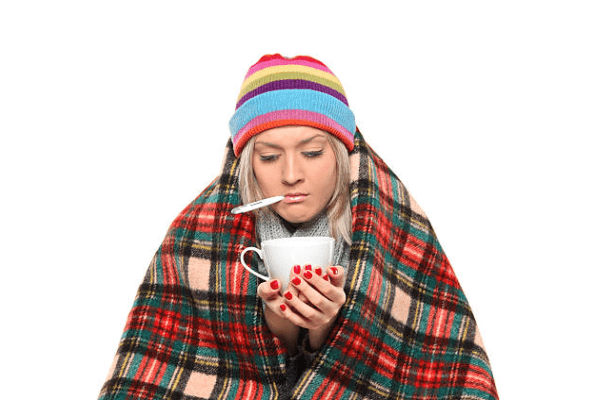Healing diets >>>> Diet at a high fever and chills
Diet at a high fever and chills.

When you are sick with a fever, you practically do not want to eat, but the body needs food during this period more than ever, because chills and fever indicate that the body is fighting for its life. High temperature and the period of its rise (chills) are always accompanied by very high energy costs. And the body at this time intensively consumes fat reserves, spending part of them as an energy resource (after all, the body temperature must be raised in order not to allow pathogens to multiply) and partly on converting fats into water, which at high temperatures is very quickly spent on cooling internal organs and the elimination of toxins produced by microbes.
But usually it is during this period of time that it is very difficult to force oneself to eat something, since the natural weakening of the struggling organism dulls the feeling of hunger, and even the appetite that was excellent in the past disappears.
What kind of diet is needed at a high fever and chills? It is a light, fast-digesting food with plenty of water. During this period, spicy salty, smoked, fried foods are not suitable, since they need to spend a lot of resources for digestion. And besides, everything salty retains water in the tissues of the body, which should quickly circulate and be excreted from the body, and not linger in the organs.
The high temperature diet consists of boiled, ground meat and fish products, seafood, boiled vegetables and fruits. So that the body does not lose precious vitamins and minerals during chills and fever, you can steam food, cut the fruit into pieces and blanch in boiling water. A raw food diet during this period is inappropriate, since the body spends much more resources on digesting raw foods than on the same foods, but thermally processed.
Do not use hot dishes during a period of high temperature - you should not add heat to the body at a time when it is already overheated in the struggle to cope. Food should be warm or at room temperature. Therefore, all drinks (water, fruit drinks, fruit drinks, jelly) are put out of the refrigerator a few hours before they are consumed.
Dairy products are considered difficult to digest food, but fermented milk products (that is, fermented) are excellent components for a diet with chills and temperatures, since they are quickly absorbed and are the favorite resources for beneficial bacteria in our digestive tract, which fight microbes for body health. For this reason, warm or room temperature kefir, yogurt, fermented baked milk, not fatty cottage cheese, light sour cream, light cheese are best friends at high temperatures.
What can you eat at high temperatures?
- These are omelets steamed or in the oven,
- Oven baked vegetables and fruits,
- Boiled chicken or turkey, boiled, steamed or baked fish,
- Soups, pureed soups and vegetable broths.
- The best meat dishes at high temperatures are minced meat (meatballs, cutlets, meatballs).
- Boiled cereals with butter.
- Vegetable, fruit casseroles,
- Oven baked cheesecakes,
- Sponge cakes without glaze and other sweet decorations,
- Light milk creams and soufflés,
- Jellies and mousses.
Which foods should not be consumed at high temperatures:
- Fatty meats (pork, lamb),
- Mushrooms (canned, boiled, fried) - you can only mushroom broth or mushroom pate,
- Pasta,
- Sour raw vegetables and fruits,
- Spicy vegetables and fruits, herbs, spices,
- Fatty cottage cheese, sour cream, cream,
- Fatty broths, jellied meat,
- Marinades, sauces.
Eating at high temperatures and chills should be light and not fatiguing, portions should be small, and the drinking regime should be increased to 3 liters or even more if sweating begins.

Read

Read



























